

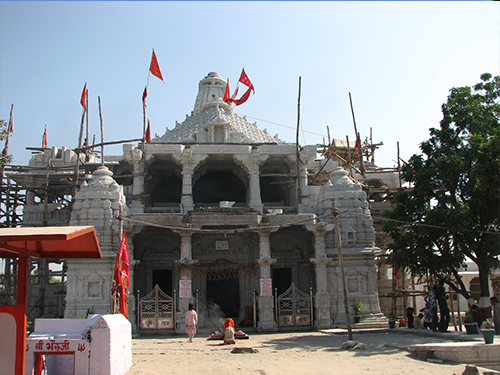
From Bhuj, the capital of erstwhile state of Kutch, about 80 km to the north is the temple of Ma Ashapura at Mata no Madh. It has become a live symbol of faith of people of Kutch in the last 600 years.
In 14th century two Karad Vanias, Ajo and Anagor had this temple built. They were ministers in the court of the father of Lakho Fulani. The severe earthquake in 1819 badly damaged the temple. Within 5 years Sundarji Shivji and Vallabhaji, the two persons of Brahmakshatriya caste repaired it. This ancient temple is now 58 ft. long, 32 ft. wide and 52 ft. tall. Once again the earthquake of 2001 AD shook it and its dome tumbled down. However, very soon it was repaired once again and now it stands with a new grandeur. The image of its deity, Ma Ashapura, is 6 ft. tall, 6ft. wide and is red in cot"or.It is said to be existing on its own, i.e. 'swayambhu'.
Considered as the Cromwell of Kutch, Jamadar Fateh Muhammad had presented this temple with a 'deepmala' weighing 2 kg silver, and with 41 lamps carved in it. The head of the temple is called Rajabava and his power is still very great. When the ruler of Kutch visits Mata no Madh, inevitably he pays a visit to the temple. At the time the head of the temple sits on the throne and the ruler stands humbly before him. Ma Ashapura is the 'kuldevi' of the 'Jadeja' community of Jamnagar. At the city of Jamnagar also a temple of 'Nani Ashapura' is built. The people of Kutch take care that nothing is missing in their hospitality of the visitors who come on foot most of the time. From Surajbari to the temple at various places tents are set up for resting. In some village such tents are turned into permanent stn..lctures as guesthouses. On the Bhuj - Anjar road and Bhachau - Dudhai road villagers erect relief camps enthusiastically. The pilgrims are served with tea, coffee, or other drinks, snacks, meals, fruits and even medical services like physiotherapy, doctors and medicines. These camps provide services round the clock. A huge camp comes up opposite the Taluka Panchayat building at Bhuj. Within 3 km of this, other 5 camps also come up. Among the pilgrims there are doctors, bank officials and other educated persons too. Many ladies, girls of peasants, girls attending colleges, teachers, rich merchants from distant Mumbai and other places, all come to Kutch and serve. The pilgrims are bidden adieu from the 'Panch-hatdi Chowk' near the temple of Ma Ashapura at Bhuj.
Millions of devotees visit the Mata no Madh to bow down to Ma Ashapura. The road turns into a carpet made of outer skin of dry coconuts. For hours the devotees wait for their turn for 'darshan' and observe discipline on their own to have a glimpse of the image of Ma Ashapura. On the day of Havanashtami the royal family of Kutch remains present at the puja. The 'jatar' is offered to the deity and a ceremony called 'patri' is performed. Here are also the temple of Chachar Mata, and places called Chachar Fand and Chachar Chowk.
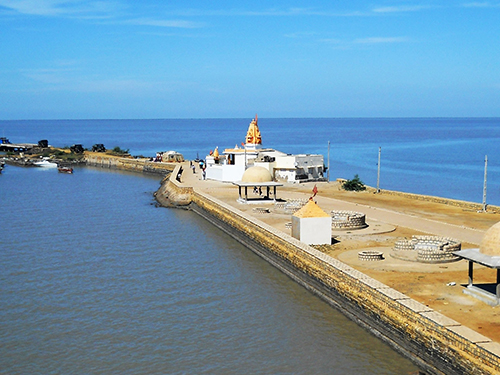
Narayan Sarovar Lake is one of the 5 holy lakes of Hinduism, along with Mansarovar in Tibet, Pampa in Karnataka, Bhuvaneshwar in Orissa and Pushkar in Rajasthan. The lake is associated with a time of drought in the Puranic area, when Narayan (a form of Lord Vishnu) appeared in response to the fervent prayers of sages and touched the land with his toe, creating the lake, now revered as holy to bathe in (though this is not recommended).
There are temples to Shri Trikamraiji, Laxminarayan, Govardhannathji, Dwarkanath, Adinarayan, Anjar, which is one of the most beautiful cities in Gujarat, houses some of the most attractive forts and monuments. The Tomb of Jesal Toral is one of the famed tourist attractions in Anjar. It is basically a samadhi of Jesal Toral. There is also a bungalow of James Mcmurdo here. It has now been converted into a veritable museum that displays Kutch art. Anjar is also famed for its beautiful block printing work, scissors, nutcrackers and penknives. These are some of the artworks which you will come across in the museum at the Tomb of Jesal Toral in Anjar. On your visit to the city, a tour to Jesal Toral Tomb is highly recommended as it is one of the premier attractions of Gujarat. The tomb is also a centre for fairs.
Bhuj is distinguished by its brightly decorated Hindu temples, beautiful palaces and intricately carved wooden pavilions. It is a paradise for handicraft lovers. The houses here are decorated both from inside as well as outside with linear reliefs made from mud and mirrors. Bhuj is famous for embroidery. The oldest museum of Gujarat is situated in Bhuj.
Be it the bandhni (tie and dye) and batik textiles, or the intricate silk embroidery done on leather, each artifact is a labour of love for the craftspersons. The colorful thread embroidery on cloth is done by different castes and communities in their own distinct way. The region was also known for the enamel work done on gold and silver jewelry, lacquered wood, seashell toys and metal bells.
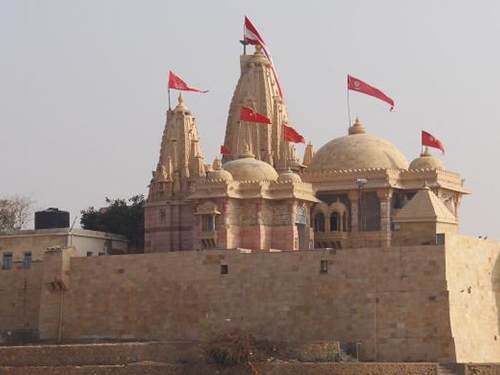
After traveling over the expanse of desert in western Kutch, you find the Koteshwar Temple, at a place where the immensity of dry land meets the incomprehensible vastness of the sea. After so much arid ground, the sight of the ocean will awaken your spirits; though the sea is even less hospitable to humans, a sobering thought. The only point that breaks the skyline from the flat brown horizon to the east and the wide blue horizon to the west is the point of the Koteshwar Temple, the last outpost of human construction at the westernmost limit of India. Not overrun by tourists like the temple at Dwarka, Koteshwar is conducive to contemplating emptiness, pondering the place of humanity on earth
The story of Koteshwar begins with Ravana, who won a boon from Lord Shiva for an outstanding display of piety. This boon was the gift of a Shiva linga of great spiritual power, but which Ravana, in his arrogant haste, accidentally dropped and it fell to earth at Koteshwar. To punish Ravana for his carelessness, the linga turned into a thousand identical copies (some versions of the story say ten thousand, some a million; suffice to say it was quite a lot.) Unable to distinguish the original, Ravana grabbed one and departed, leaving the original one here, around which Koteshwar Temple was built.
Visitors can see the temple, walk along the beach and on a clear night, even see the glow of light from Karachi, Pakistan, on the northwestern horizon
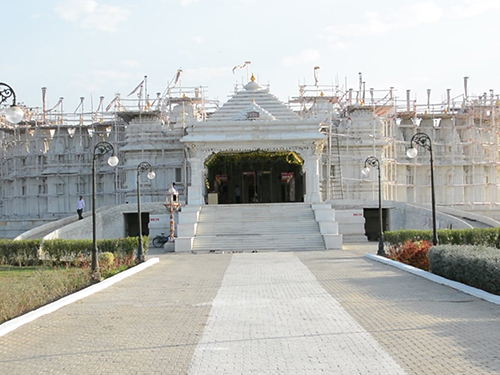
This is an important holy place for the Jains which is almost 15 kms from the centre and 51 kms away from Bhuj. It has 72 Deris of Lord Mahavir. People always come to see this beautiful and attractive place. Bounter Jinalaya is also known as Adiswar Bounter Jinalaya Mahatirth. It is situated on the Mundra-Mandvi Road about 9 kms away from the central town of Mandvi. It is spread out in almost 80 acre areas. It is built in the memory of Gun Sagar Suriswarji Maharaj. The construction of this Jinalaya began in 1982 as is built in an octagonal shape. This Jinalaya will be proven as a Milestone for our future generation.
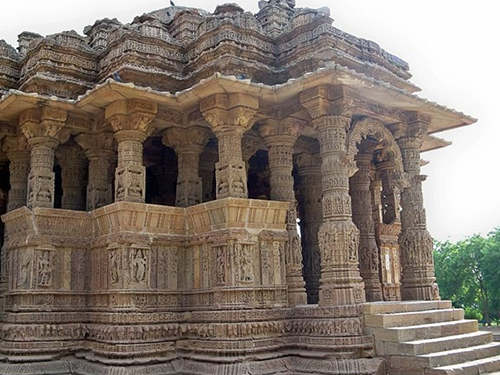
Anjar, which is one of the most beautiful cities in Gujarat, houses some of the most attractive forts and monuments. The Tomb of Jesal Toral is one of the famed tourist attractions in Anjar. It is basically a samadhi of Jesal Toral. There is also a bungalow of James Mcmurdo here. It has now been converted into a veritable museum that displays Kutch art. Anjar is also famed for its beautiful block printing work, scissors, nutcrackers and penknives. These are some of the artworks which you will come across in the museum at the Tomb of Jesal Toral in Anjar. On your visit to the city, a tour to Jesal Toral Tomb is highly recommended as it is one of the premier attractions of Gujarat. The tomb is also a centre for fairs.
Bhuj is distinguished by its brightly decorated Hindu temples, beautiful palaces and intricately carved wooden pavilions. It is a paradise for handicraft lovers. The houses here are decorated both from inside as well as outside with linear reliefs made from mud and mirrors. Bhuj is famous for embroidery. The oldest museum of Gujarat is situated in Bhuj.
Be it the bandhni (tie and dye) and batik textiles, or the intricate silk embroidery done on leather, each artifact is a labour of love for the craftspersons. The colorful thread embroidery on cloth is done by different castes and communities in their own distinct way. The region was also known for the enamel work done on gold and silver jewelry, lacquered wood, seashell toys and metal bells.
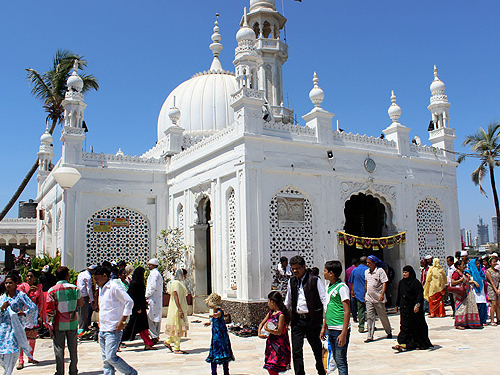
The shrine of Haji Pir in Kutch has many Hindu followers. ‘Low’ caste Kolis offer free service and keep the shrine clean, and a rich Jain industrialist has paid for constructing its boundary walls. A symbol of India's Ganges jamuni tehajhibani haja Pir Dargah is the unique identity of Kutch of Gujarat. India - Pakistan border at the dargah of Haji pir paraca live is believed to be.
Pir real name was Haji Ali Akbar. He was a soldier sahabuddin Ghori. They were following the events in the village. He’s here for his whole life was spent in service. He had to give up his caliphate ahuti giving cows climbi
A Muslim saint called Haji Pir believed to have originally come to India as a soldier in the army of Shahbuddin Ghori. After giving up the service, he settled near village "Nara" and spent his days in the service of people. He laid down his life while trying to recover cows driven away by dacoits. After performing the Haj, he was known as Haji Pir and also known as Live Pir. People worship at Haji Pir Dargah and then proceed to Karol Pir Dargah 4 miles away.
A symbol of India's Ganges jamuni tehajhibani haja Pir Dargah is the unique identity of Kutch of Gujarat. India - Pakistan border at the dargah of Haji pir paraca live is believed to be.
Pir real name was Haji Ali Akbar. He was a soldier sahabuddin Ghori. They were following the events in the village. He’s here for his whole life was spent in service. He had to give up his caliphate ahuti giving cows climbing.
A Muslim saint called Haji Pir believed to have originally come to India as a soldier in the army of Shahbuddin Ghori. After giving up the service, he settled near village "Nara" and spent his days in the service of people.
He laid down his life while trying to recover cows driven away by dacoits. After performing the Haj, he was known as Haji Pir and also known as Live Pir. People worship at Haji Pir Dargah and then proceed to Karol Pir Dargah 4 miles away. Haji Pir is an important shrine strategically and culturally. Being close to the border between India and Pakistan, this shrine attracts devotees from Pakistan. Haji Pir has tremendous following among people of all religions.
They say that whoever donates towards the construction, expansion and repair of the dargah, multiplies his own wealth. There are several such stories of devotees and donors to the dargah having become richer after the donation
As politicians debate over the existence of Lord Ram, a unique attempt is being made near the Indo-Pak border to bring Hindus and Muslims together at a "RamKatha" programmed organized at haji pir Dargah
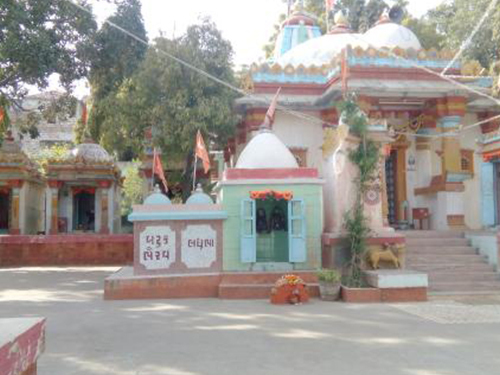
Rudrani temple here is dedicated to 04 Hindu Goddess – Ashapura, Rudrani, Ravechi & Momaya. 14 kms from Bhuj, on the road to Khavada.This temple, located at a scenic spot on the banks of the river Khari, is the presiding deity of the Maharajas of Kutch - the Jadeja family. According to mythology, it is 400 years old. A stone's throw away from the temple is the Garha Safari Lodge, a theme hotel that has a panoramic view of the river and offers an experience of staying in bhoongas , the traditional dwellings of the villagers but with all the modern comforts. The temple garden and nearby nursery of medicinal plants stands in stark contrast against the arid landscape. The garden draws water from the nearby Rudramata Dam. One can visit this temple while going to kutch tour.
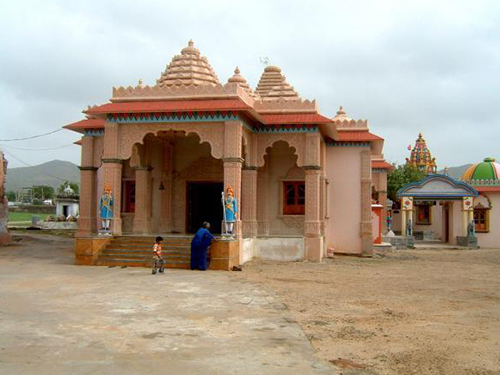
The temple and Samadhi of Mekan Dada is visited by people from all over Gujarat as well Rajasthan at time of this fair. Among the major follower of Mekan Dada are Ahir, who consider him as their God. The Kapadi community, to whom the Sant Mekan Dada belonged are major disciples and also manage the temple premises and Akhara, also known as Mekan Dada no Akharo. Mistri and Rabari also are his followers. The temple was built by architects belonging to Mistri community, under patronage of King of Kutch. Rao Deshalji II of Kutch was also a follower of Mekan Dada. The samadhi of one Mistri Kanji, who was among the first five disciples of Sant Mekan Dada, is also within these premises.
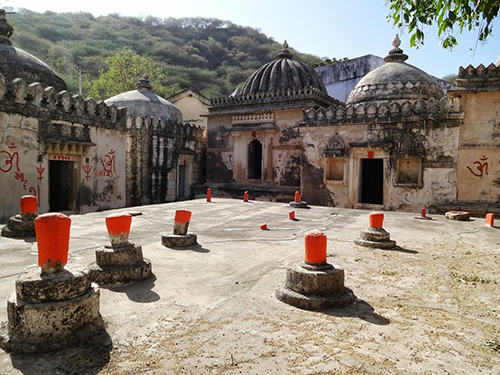
Than Monastery is about 60 kms from Bhuj. A beautiful temple complex tucked away in the quiet countryside of Kutch district. Than Monastery is situated at the foot of Dinodhar Hill and is dedicated to Dhoramnath. The temple is made with limestone, mud and plastered with cement and one can see bright vermillion colour smeared on various walls. Dinodhar Hill is located near Nani Aral village, in Nakhatrana Taluka, Kutch District , Gujarat, in India. Dinodhar Hill is a tourist and pilgrimage place of kutch.
Dinodhar Hill, an inactive volcano rising to an elevation of 386 meters, has a temple dedicated to Dharmanath (Dhoramnath) at its peak. Dharmanath, founder of exclusive monastic order, Kanfata (slit-ears), is said to have stood on his head for twelve years as penance for a curse he made. Atop Dinodhar, there are spectacular views of the Great Rann and the Chhari Dhandh wetland, especially after a good rain. This area abounds with wildlife and flora and is a trekker destination. At the bottom of Dinodhar Hill stands the 500-year-old Than Monastery belonging to the Kanfata sect.
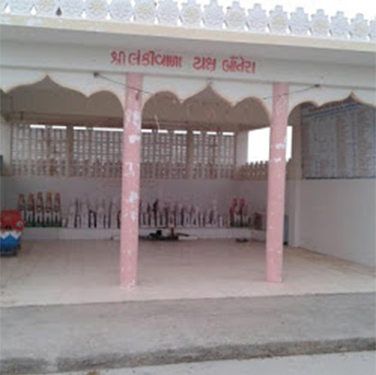
It is about 35 Kms from Bhuj. It is a 9th/10th century A.D. temple raised on a high plinth and has some fine sculpture on display. This temple is also known as Purneshwar Temple. Purvano oppressed his subjects, especially the Sanghar people in the neighboring village. To deliver them from his tyranny, 72 (Bother) warriors or yakshas (jakhs in Kachchhi), belived to be of Assyrian origin, & their sister Sayari, settled on a nearby hilltop, named Kakkad Bhit after the eldest of the Yakshas. They killed the king. The Sanghars made the Yakshas their patron deities and erected the Bohter yaksh Temple in memory of this event. Raised on a high plinth, the shrine has some beautiful sculptures on display. In proximity to the temple is located Vadimedi, a palace belonging to the Solanki period.
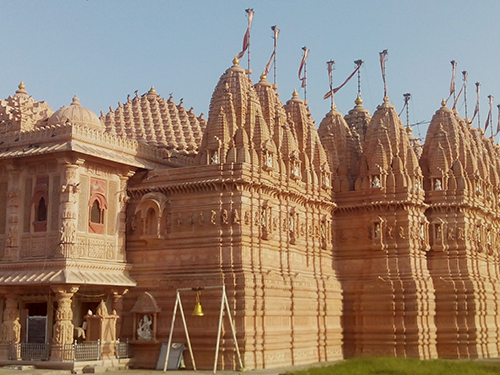
These temples in Bhadreshwar are believed to be the oldest Jain temples in India and Jain monk Shravak Devachandra laid the temple's foundation stone ages ago. The temple complex house about 53 Jainalays that surround the main Bhadreshwar shrine. These temples were destroyed several times due to earthquakes and other natural calamities but have been successfully redone time and again. The architecture of the ancient Shiva temple is such that the presiding deity is visible from the ground floor as well as the first floor, with some beautiful sculpture chiselled on the outer walls. The tour will also cover stepwell, Sol Thambhi Mosque, Jagdu Shah Palace, Lal Shabhar Mosque, Chokunda Mahadev Temple - a visit that will expose you to many religious traditions of India, congregated in one region.
Get An Experience Worth a Lifetime Book Now
Pay Now With Credit Card , Debit Card.
